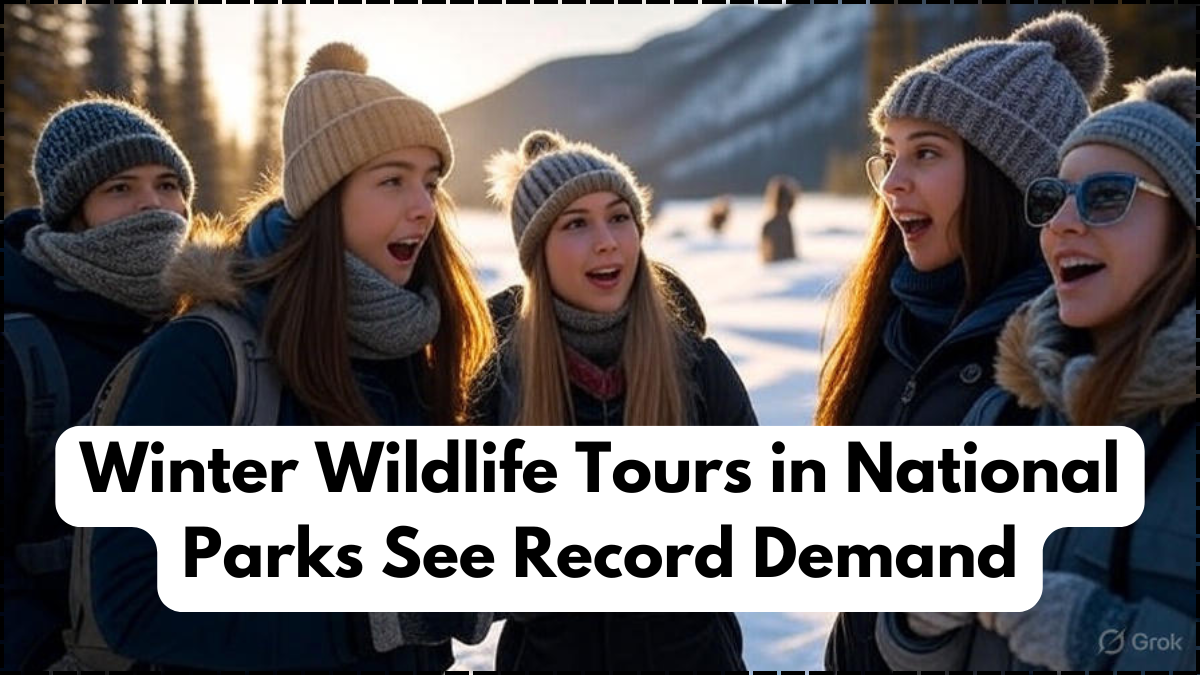The chill of winter is drawing more travelers than ever to India’s wilderness as Winter Wildlife Tours in National Parks hit record demand in 2025. From snow-dusted Himalayan trails to migratory bird havens in the wetlands, these tours are proving that wildlife adventures are not limited to summer safaris. Families, photographers, and eco-tourists are now embracing winter as the prime season to explore rare species in their natural habitats.
The boom reflects a shift in how people connect with nature. Travelers are seeking experiences that combine exploration with conservation, and National Parks are at the heart of this movement. The unique winter landscapes provide opportunities to spot species rarely visible in warmer months.

Why Winter Wildlife Tours Are Special
Unlike traditional safaris, Winter Wildlife Tours offer distinct ecological encounters. In northern regions, elusive snow leopards descend to lower altitudes, increasing sighting chances. Wetland National Parks become host to thousands of migratory birds, creating spectacular viewing opportunities.
Key reasons for the growing popularity:
- Unique animal behaviors during winter months
- Better visibility in dry, leafless forests
- Opportunity to spot migratory birds
- Photographic appeal of snow-covered landscapes
- Eco-conscious travelers preferring quieter seasons
Top National Parks for Winter Safaris
India’s diverse geography offers varied ecosystems where Winter Wildlife Tours thrive. From Himalayan mountains to central Indian forests, each park showcases a different spectacle.
National Park |
Key Winter Attraction |
Best Months to Visit |
|---|---|---|
Hemis National Park |
Snow leopards and Himalayan wildlife |
December – March |
Keoladeo National Park |
Migratory birds from Central Asia |
November – February |
Kaziranga National Park |
One-horned rhinoceros in misty grasslands |
November – April |
Ranthambore National Park |
Tiger spotting in sparse winter forests |
October – March |
Jim Corbett National Park |
Elephant herds and rich birdlife |
November – February |
This table highlights how different National Parks contribute unique experiences to Winter Wildlife Tours, making them attractive to travelers nationwide.
The Role of National Parks in Conservation
The rise of Winter Wildlife Tours underscores the importance of National Parks as conservation zones. These protected areas balance tourism with sustainability, ensuring endangered species are not disturbed. Winter tourism also spreads visitor numbers throughout the year, reducing stress on habitats during peak summer months.
Eco-tourism initiatives in National Parks now include guided walks, educational sessions, and eco-friendly lodges. This ensures travelers not only witness nature but also understand the importance of preserving it.
Economic and Cultural Impact
The demand for Winter Wildlife Tours is also boosting local economies. Homestays, guides, and transport providers in regions surrounding National Parks see significant income during the winter season. Cultural exchanges thrive as tourists interact with local communities, learning about traditions that have coexisted with wildlife for centuries.
Some of the major benefits include:
- Job creation for local communities
- Increased funding for conservation efforts
- Promotion of sustainable, responsible tourism
- Awareness about climate and habitat protection
Tips for Travelers
For travelers planning Winter Wildlife Tours, preparation is key. Dressing in layers, carrying binoculars, and respecting park rules enhances the experience. Hiring local guides ensures accurate spotting while supporting the local economy.
Quick travel tips:
- Book safaris early as demand is soaring
- Carry thermals and waterproof gear
- Use eco-friendly accommodations
- Respect park timings and restrictions
- Travel with trained naturalists for deeper insights
Conclusion
The surge in demand for Winter Wildlife Tours in National Parks highlights a growing appreciation for off-season adventures and eco-conscious travel. By combining unique wildlife encounters with conservation, these tours redefine India’s tourism calendar. As travelers flock to witness snow leopards, rhinos, and migratory birds, the future of winter safaris looks brighter than ever.
FAQs
What makes Winter Wildlife Tours different from summer safaris?
They offer unique experiences like snow leopard sightings and migratory bird watching, which are rarely seen in summer.
Which National Parks are best for Winter Wildlife Tours?
Hemis, Keoladeo, Kaziranga, Ranthambore, and Jim Corbett are among the top choices.
Can families join Winter Wildlife Tours?
Yes, most National Parks offer family-friendly safaris and guided tours suitable for children.
Are Winter Wildlife Tours eco-friendly?
Yes, eco-tourism practices ensure that tours balance wildlife viewing with habitat protection.
Why are National Parks crucial for winter tourism?
They provide safe, protected habitats for endangered species and offer structured tourism that supports conservation.
Click here to learn more